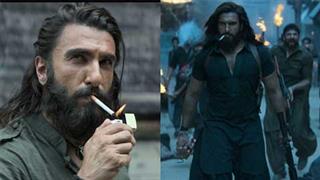From indolent Nawabs chewing betel nuts to regular denizens going about their day-to-day life even as they surmount subtle signs of
marginalisation and alienation, the caricature of Indian Muslims on Indian celluloid has undergone many changes.
The just released "Dhokha", revolves around a Muslim police officer in Mumbai who finds nothing in common with suicide bombers
from his own community but is faced by the same questions that bog many in the minority community in India.
The Pooja Bhatt film questions why Muslims are viewed suspiciously when there is a bomb blast, what makes some youths take to
terrorism and the increasing communalization of law enforcers. The film comes on the heels of "Chak De! India" in which the
protagonist had to clear unfair prejudices levelled against him.
Though the "M" word was not used, but the dilemma of a Muslim in today's India coursed through the narrative as Shah Rukh Khan
essayed the role of a former hockey captain redeeming himself of the traitor's blot that was imposed on him after his team lost a
match to Pakistan.
Both the films bring out the predicament of a majority of Indian Muslims who have to clarify their position vis-à-vis the partition,
Pakistan and terrorist attacks.
Muslim characters in Bollywood movies have witnessed a sanguine change over time. The movies in 50s and 60s portrayed Muslim
characters mostly as well-cultured feudal lords.
In 70s, a distinct change in characterization of the Muslims started emerging in the Bollywood films, says commentator Syed Ali
Mujtaba. The indolent Nawabs chewing betel nuts and splurging their money on the nautch girls ("Mere Huzoor", "Pakeezah", "Umrao
Jaan") characterized Bollywood Muslims.
During this genre, Muslim men were shown wearing Aligarh cut sherwani and reciting Iqbal or Ghalib's poetry at the drop of their cap.
At the same time, Hindu films projected a world without communal or caste tensions.
In the 1960s, a Muslim hero Yusuf Khan (Dilip Kumar) sang devotional songs in temples. Lyricists Shakeel Badayuni or Sahir
Ludhianvi wrote the songs, the music was given by Naushad Ali and sung by Mohamad Rafi, says trade watcher V.
Gangadhar.
For the Hindi film industry the world was devoid of caste or communal divisions. The war films of that era like Chetan Anand's
"Haqeeqat" showed Hindu and Muslims soldiers fighting the common enemy, the Chinese and sharing the common grief. Villains in
Hindi films were not identified with Muslims.
They bore exotic names like "Tiger", "Scorpion" or more recently "Mogambo."
So Bollywood had Amar, Akbar and Anthony swearing undying affection and Muslim friends accepted prasad from the Hindu hero's
mother and allowed their sisters to tie rakhis on their wrists, Gangadhar adds.
Mani Ratnam's "Bombay", released in 1995, redefined the contours of characterization of Muslims in Bollywood films.
Set in
the backdrop of 1993 Mumbai bomb blasts, this movie had a strong message for communal harmony even as it showed the
protagonist (Manisha Koirala), a Muslim girl, eloping with a Hindu boy (Arvind Swami). This was a watershed of sorts as it also
depicts the changing face of the Indian society.
Films like "Roja" began to bring out the ideological conflict between the nationalist victim and the jehadi terrorist. Films like
"Sarfarosh', "Maa Tujhe Salaam", "Pukar", "Gadar - Ek Prem Katha", "Fiza", "Mission Kashmir", "Border", "LOC" and the latest
"Fanaa" all form the long list of such Bollywood potpourris.
These films would make it a point to have at least one Indian Muslim who would go to extreme measures to prove his loyalty to
India.
Indian Muslims are as much part of the mainstream Indian society as anyone else. Their religious identity is only a part of their
consciousness that others come across only by their names. Their aspirations are the same as any average Indian, says
Mujtaba.
Going by "Chak De! India" and "Dhokha", it seems Bollywood is waking up to the fact that Indian Muslims lead routine lives. Critics
moan the sermonizing in Pooja Bhatt's film that released Friday but her attempt to give a face and a voice to the majority moderate
Muslims in India is worthy of praise.
London bombing-inspired "Dhokha" started out as the least favoured film to hit the marquees but following good word of mouth
publicity that the film has generated, it is expected to rake in the moolah in the multiplexes.
Surprisingly, "Ram Gopal Varma Ki Aag" that released amidst much media blitz did not even manage a good opening. The film, which
is not said to be a "representation" of the cult movie "Sholay", was expected to fetch an 80 percent start, especially at single screens
and in certain circuits where action films work, but its 15 to 20 percent start came as a shocker, according to a trade
weekly.
The not-so-rosy viewers' response will add to the filmmaker's woes.
The other remake of Bollywood classic - "Victoria No. 203" also started on a poor note. Seems like the coast is clear for "Dhokha" to
emerge as the dark horse in spite of formidable competition from the industry's greatest.
Changing face of Muslims in Bollywood
Monday, September 03, 2007 14:46 IST

















